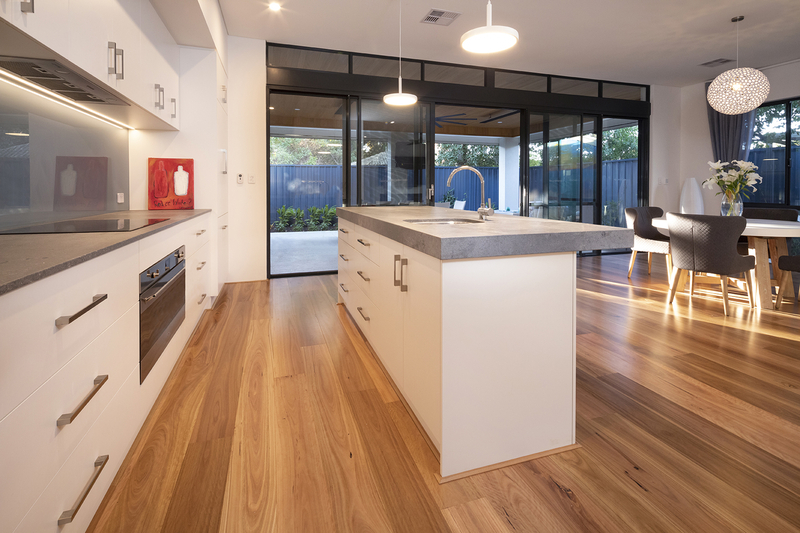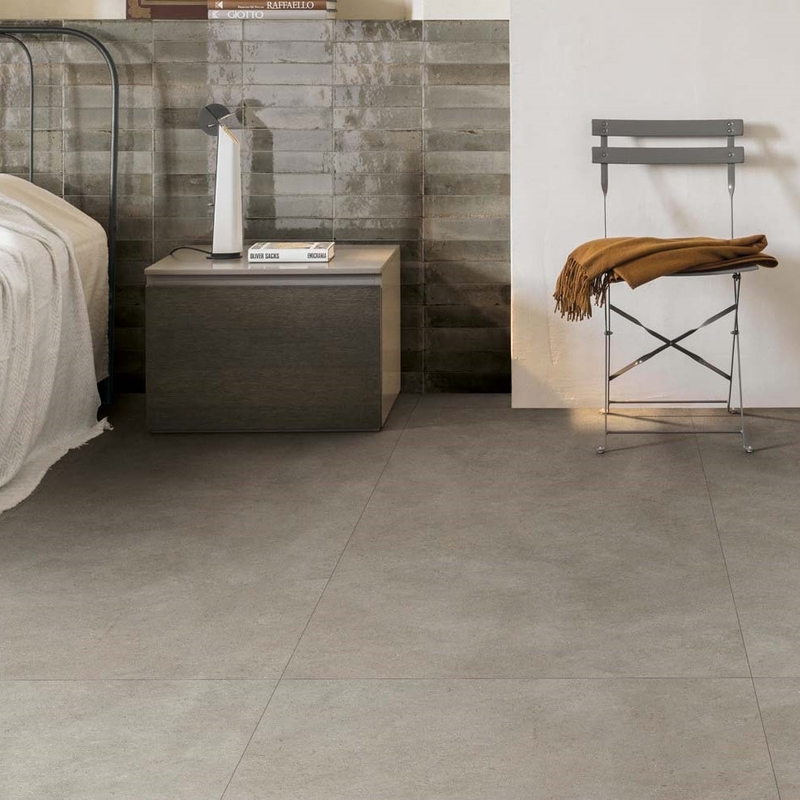HOW TO CHOOSE THE IDEAL MATERIAL FOR YOUR KITCHEN FLOOR
Art & Living

Unassuming, the ground you walk on becomes an integral component of your living space. It is intrinsically connected to your life and every moment of it – it becomes a part of you. So, how do you choose the right material that will take you through the journey of life? The Art & Living column on ARTRA Magazine’s E56 Oct/Nov 2020 discussed the aesthetic considerations of kitchen flooring. This article will discuss aesthetic and functional considerations of kitchen tiling in terms of material. With kitchen tiling, material and functionality go hand in hand. To phrase it differently, every material has physical qualities that will determine a tile’s performance in the kitchen. So while material choice will have an aesthetic consequence, the principal consideration should be finding the best material to handle the particular conditions of your kitchen environment.
HARDWOOD

Hardwoods such as oak, maple and cherry are amongst some of the most durable tree species, giving hardwood flooring endurance and longevity. It is softer and ‘warmer’ than regular ceramic or porcelain tiling, so it will give your kitchen a more cosy, classic or premium look depending on your hardwood choice. For a cheaper option, you can buy unfinished boards. If you do, you can then decide to paint, varnish or oil your floor – giving greater unique aesthetic avenues to explore.
The width and length of your boards have aesthetic and perceptive consequences for your kitchen space. Narrow boards create a more traditional vibe; whereas smaller boards offer a denser and more contemporary look. In a small kitchen, wider boards will make the room look bigger, but in a larger kitchen, thinner and shorter boards will create a denser and more textured feel, drawing focus to the floor itself. However, hardwood becomes discoloured by water fairly quickly, and water can cause the internal fibers to swell.
PORCELAIN

Porcelain tiling is made from a mixture of clay and sand that is then fired at extremely high temperatures and pressures. The end result is a hard and dense tile that is less porous than other materials such as ceramic tiling. Porcelain is perfect for high traffic areas and ‘wet zones’ such as bathrooms and kitchens. Porcelain tiling can also come glazed or unglazed. The former has a glass-like coating added during firing, which produces a coloured surface. The latter has colour added to the initial clay mixture, meaning the colour is carried all the way through the tile itself. It’s worth noting that glazed porcelain can get scratched and shows signs of ware, unlike unglazed porcelain. So unglazed is a more suitable option for busier homes.
CERAMIC

Ever since the Sumerians laid the first decorative ceramic tiles in about 4000 BC, ceramic tiling has been a staple within both the artistic and design realms. The tiles are made in much the same way as porcelain tiles but without the sand added to the starting mixture. This means they are softer, more porous and not as dense as their porcelain counterparts. These qualities make ceramic tiling easier to cut and install. Plus once a glaze is added, the surface is impervious to any form of spillage. Ceramic tiling comes in just as wide an array of shapes, colours, sizes and patterns as porcelain tiles as well. If you’re big into DIY and have a smaller family (meaning less foot traffic in the kitchen) then ceramic tiling could be the right choice for you.
STONE - TRAVERTINE

Stone floor tiling is made up of natural stone ranging from slate and granite to marble and travertine. The majority of stone tiles are porous so they need to be refinished with a quality stone sealer every few years. This really helps to bring out the grains and detail of the stone, creating a beautiful texture and organic feel.
Travertine tiling is derived from a type of limestone that forms around mineral spring deposits. It is cheaper than other stone tiles and offers pretty much the same performancebased longevity. Travertine offers a high level of customisation possibilities, as it is easy to cut and shape and has a non-slip texture. However, travertine tiling is very porous. These holes will usually start to show some signs of use after a while. The tiles are susceptible to both staining and scratches so ensure that you seal the surface with a quality stone sealer.
At first thought, a kitchen floor might seem something of an afterthought. Now your kitchen flooring is no longer an unknown or something to figure out at the very end of your design process. You have the tools to make better choices to elevate the style and practicality of your kitchen. Your kitchen floor has infinite potential, and you have the keys to unlock all those creative opportunities.


